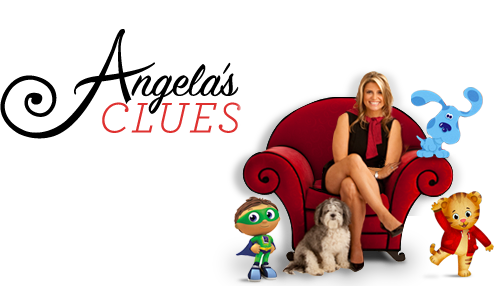
Many people think that watching television is a bad habit—just think of some of the names people have given the TV over the years: idiot box, boob tube, etc. However, as a creator of educational television shows for kids, I know that television is a powerful teaching tool. And it’s especially powerful—and has proven successful in longitudinal studies—when written with the intent to teach. My shows are all based on a school curriculum and have a foundation in research on child development. Given that, Super Why has helped kids learn to read, according to one study from the University of Pennsylvania) and Blue’s Clues has helped kids score better on standardized tests, research from the University of Alabama indicates.
But the truth is ALL television is educational—kids learn from everything that they watch on TV. The question to us parents is what exactly are they learning? If our kids are bombarded with commercials that have been written with the intent to sell “less than nutritious foods” to our children, is it harmful? The answer is yes. But believe it or not, the commercial content isn’t your only concern, according to recent research—the mere act of watching television during meals has proven to be problematic.
 Tube-watching eaters consumed fewer fruits and vegetables, and more pizza, snack foods, and sodas than children who came from families where TV watching and snacking were kept separate, according to a study from the American Academy of Pediatrics. So it’s not just the advertising that sets kids up for bad eating habits, but the act of watching television while eating, which can lead to mindless eating and negative food choices.
Tube-watching eaters consumed fewer fruits and vegetables, and more pizza, snack foods, and sodas than children who came from families where TV watching and snacking were kept separate, according to a study from the American Academy of Pediatrics. So it’s not just the advertising that sets kids up for bad eating habits, but the act of watching television while eating, which can lead to mindless eating and negative food choices.
With my research background, I’m totally on board with this. I know that TV watching and eating can be a dangerous combo. Except, as a mom, I have a problem: My girls want a snack every time they watch TV! It has become an association for my girls: TV=Snack. So, with this study as my armor, my husband and I have started a new regime to combat the snacking/tv obsession!
These are the tricks that we employ at home; maybe you’ll find one or more useful, too.
• Choose TV programs the way you would choose the food you eat
That means opting for better quality shows that are age-appropriate for your child.
 • Have a “television-watching” allotment
• Have a “television-watching” allotment
Remember, everything in moderation and what works for us might not for you. Our girls, 8 &10 yrs old, watch one hour of TV on Saturday and Sunday. No TV during the week.
• Skip commercials
If possible, use a DVR and/or ON DEMAND viewing to avoid those tempting ads. Kids can quickly learn how to fast forward commercials.
• Make some simple NO-TV rules
We have two: No TV in eating areas & no TV during meals. With regard to snacking, we are “working towards” a no-snack rule in our house.
Right now, we are allowing one approved snack while watching (granola with milk has been their choice as of late). However, due to this research, we are slowly moving towards no snacks at all during television so there is no “habit” that forms (TV = food) .




















 To deter any hint of a summer slump, Summertime Reading is an excellent way to continue feeding those little heads at home. Since we’re well into August, kids around the country are now busy checking off the books from their summer reading lists. But, hey! What about writing? Why is writing the lesser known twin?
To deter any hint of a summer slump, Summertime Reading is an excellent way to continue feeding those little heads at home. Since we’re well into August, kids around the country are now busy checking off the books from their summer reading lists. But, hey! What about writing? Why is writing the lesser known twin?







